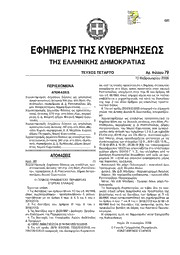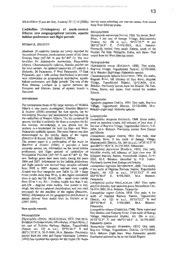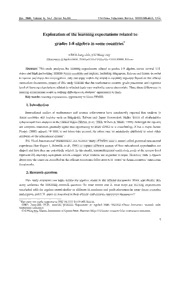
Theoretical Methods in the Physical Sciences: An introduction to problem solving using Maple V PDF
Preview Theoretical Methods in the Physical Sciences: An introduction to problem solving using Maple V
Theoretical Methods in the Physical Sciences to Bobbye and to Evy and Kathy W i l l i am E. B a y l is Theoretical Methods in the Physical Sciences an introduction to problem solving using Maple V Springer Science+Business Media, LLC William E. Baylis Department of Physics University of Windsor Windsor, Ontario Canada N9B 3P4 Library of Congress Cataloging-in-Publication Data Baylis, William E. (William Eric), 1939- Theoretical methods in the physical sciences : an introduction to problem solving using Maple V / William E. Baylis p. cm. Includes index. ISBN 978-1-4684-7138-0 ISBN 978-1-4612-0275-2 (eBook) DOI 10.1007/978-1-4612-0275-2 1. Physical sciences-Data processing. 2. Problem solving. 3. Maple (Computer file) I. Title. Q183.9.B39 1994 94-3473 500.2,078--dc20 CIP Printed on acid-free paper © Springer Science+Business Media New York 1994 Originally published by Birkhäuser Boston in 1994 Copyright is not claimed for works of U.S. Government employees. All rights reserved. No part of this publication may be reproduced, stored in a retrieval system, or transmitted, in any form or by any means, electronic, mechanical, photocopying, recording, or otherwise, without prior permission of the copyright owner. Permission to photocopy for internal or personal use of specifci clients is granted by Birkhäuser Boston for libraries and other users registered with the Copyright Clearance Center (CCC), provided that the base fee of $6.00 per copy, plus $0.20 per page is paid directly to CCC, 222 Rosewood Drive, Danvers, MA 01923, U.S.A. Special requests should be addressed directly to Springer Science+Business Media, LLC. ISBN 978-1-4684-7138-0 Typeset by the author. 9 8 7 6 5 4 3 2 1 PREFACE The advent of relatively inexpensive but powerful computers is af fecting practically all aspects of our lives, but some of the greatest influence is being felt in the physical sciences. However, university curricula and teaching methods have responded somewhat cautiously, having only recently come to terms with the now omnipresent calcula tor. While many instructors at first feared that the widespread use of pocket calculators would lead to generations of students who could not multiply or perhaps even add, few now seriously lament the disappear ance of slide rules, logarithm tables, and the often error-bound tedium that such tools of the trade demand. Time that used to be spent on the use of logarithm tables and manual square-root extraction can be prof itably turned to earlier studies of calculus or computer programming. Now that the calculator has been accepted into the classroom, we face a computer-software revolution which promises to be considerably more profound. Modern textbooks in the physical sciences routinely assume their readers have access not only to calculators, but often to home or even mainframe computers as well, and the problems teachers discuss and assign students can be more complex and often more realistic than in the days of only pad and pencil computations. As less effort is spent on numerical computation, more can be devoted to conceptual under standing and to applications of the increasingly sophisticated mathe matical methods needed for a real appreciation of recent advances in the discipline. While the calculator revolution was spreading through the schools, researchers in some branches of theoretical physics were developing pro grams to help them with the manipulation of algebraic and differential equations. Instead of computing numbers, such programs rearrange symbols and derive analytical solutions. The programs were initially bulky behemoths running only on large mainframes or supercomput ers; they were also balky and awkward to use, and their capabilities were quite limited. Only dedicated scientists in specialized theoreti cal fields such as general relativity made much use of them. However, as personal computers have advanced to become more powerful than the supercomputers of two decades ago, the software has become faster vi PREFACE and more encompassing, and an ever larger community of scientists has embraced the use of symbolic manipulation and computer algebra. During the past couple of years, mathematics packages such as Maple, Mathematica, MathCad, Macsyma and Derive have become so common for PC-compatible, Macintosh, Atari, and other computers as well as for most Unix workstations that popular computer magazines, like PC Magazine, have featured and reviewed them. These programs generally combine abilities in symbolic manipulation with routines for numerical approximation and plotting. It seems likely that most stu dents now entering university programs in the physical sciences will make some use of such mathematics packages before they receive post graduate degrees. The impact of these mathematics packages on university teaching may well prove far greater than that of pocket calculators. The pack ages will of course allow a wider variety of more complex, more realistic problems to be solved, but they will also inevitably change the way students approach problems. Instead of laboriously plotting data for a single experiment and fitting it to simple curves, much more data can be quickly visualized, fit and analyzed. Instead of grinding through the algebra to determine the coefficients of a power-series solution to a linear differential equation, the student can let the computer whip out the results and spend his or her time visualizing the results and relating them to physical phenomena. Instead of worrying about what substitution will simplify an integral to standard form so that its so lution can be recognized, the student can concentrate on learning and applying new mathematical abstractions. The introduction of powerful mathematics packages in the under graduate curriculum will undoubtedly cause disruption and pedagog ical debate. Just as when pocket calculators became common, there will again be fears about the loss of facility in mathematical manipu lation. However, as the new tools become more popular, the need for such facility will decline, and the talents required of students making a career in mathematics may also change. The potential gains, includ ing a greater appreciation of mathematical abstraction and hands-on experience with a broader selection of mathematical tools, will, once realized, far outweigh the losses. The term computer math conjures up visions of number crunching PREFACE vii on super-computers and mind-boggling numerical detail. Such aspects play an important role, but they are not the essence of physical science. Physical scientists make extensive use of simple models and pictures to convey concepts that are often more firmly based in geometry than in analysis. A course introducing theoretical methods in the physical sciences will naturally emphasize numerical and analytical techniques, but should not exclude the development of pictorial and geometrical concepts. Any math package chosen for the course should have superior graphical capabilities, and these should be used fully to present data in visual form. This text grew out of a one-semester course which introduced a symbolic-mathematics package into the curriculum of the physical sci ences at the University of Windsor. The objective of the course is not restricted to training students to use a symbolic math program; while that should be a practical by-product, the ability to tap artificial intel ligence cannot replace the development of human wisdom. The most important skill science students can acquire is to learn science on their own through reading, deep thought and analysis, and discovery. No one would claim that this skill is easy to acquire: it requires concentrated effort on the part of the student, who can use all the help available. The math package is just one useful tool in guiding students to the new approaches and new thought processes needed by the physical scientist to increase her or his understanding of nature. The text is designed for a one-term course, to be taken in the first or second year of university study. Since some familiarity with ba sic kinematics and elementary calculus is assumed, the course may be most effective after the student has successfully completed at least one semester of introductory courses in university-level physics and calcu lus. The reason for the early introduction of the material is to provide tools that the student can use throughout his or her career. The timing is critical since it is during the first year that many students decide (or their professors decide for them) whether or not they were cut out to be physical scientists. Their previous practice of memorizing equations and plugging in appropriate numbers, which served many quite well in high school, is no longer sufficient for academic success at the univer sity. Now it is more important to relate equations to phenomena and mathematical abstractions to physical experience; still, this presents viii PREFACE a major barrier to large numbers of students. Some of the tools and practice in this text, from dimensional analysis and order-of-magnitude estimates to Maple algorithms and geometric algebra, should help. The course for which this text is designed is not meant to replace, and in fact is quite distinct from, the traditional third- or fourth-year course in mathematical physics. For example, although the symbolic math package learned here can be quite useful in solving differential equations and in studying special functions, such topics receive only a bare introduction on these pages. Instead, the text concentrates on areas where first- and second-year students in the physical sciences are known to have difficulty, either because of inadequate preparation or because of an underdeveloped problem-solving capacity. The text may supplement-but should certainly not replace-the text in a general physics, astronomy, chemistry, or geology course; it makes no pretense of encompassing a systematic treatment of the first year curriculum, and it lacks a laboratory of real physical experimen tation which is so important for developing an "intuitive feeling" for the subject. Virtual experiments on a computer can supplement and extend physical experience, but they can never replace it. This text is also not designed for a programming course. As an inte gral part, it uses the Maple package (currently Maple V, Release 3), an acclaimed leader in symbolic capabilities, developed since 1980 by sci entists and mathematicians at the University of Waterloo, Ontario, the ETH in Zurich, and elsewhere. Extensive use is made of the symbolic manipulation, numerical-approximation, and graphical capabilities of the package, but only minimal attention is paid to writing new proce dures. Most of the examples are taken from elementary physics with some applications to astronomy, chemistry, and geology. The emphasis on physics reflects its role as the most fundamental and probably the most difficult of the natural sciences. Geometrical concepts are emphasized in chapters 4 and 9 on vectors. Chapter 4 presents traditional vector manipulations of addition, scalar multiplication, and dot and cross products. Although vector compo nents, basis vectors and reference frames are discussed, the stress is more on the concept of vectors as single entities. The relative position and motion of an object with respect to an observer, or of two objects with respect to one another, can be treated directly with vectors with- PREFACE ix out the explicit introduction of components. Chapter 9 extends the vector concept to what is known as the geometric algebra of vectors and their products. It thus opens the rich potential of Clifford-algebra techniques to the reader. It is assumed that students have access to the full Maple V package, Release 2 or higher, either on an independent PC or through a network connection, but most of the work discussed in these notes can be ade quately carried out with the student edition of Maple V (Release 2 or higher), as well as on Unix or Apple Macintosh platforms. No prior knowledge of Maple or symbolic processing is needed, and indeed, this text can serve as an introduction to many features of Maple needed by physical scientists. However, the present text makes no pretext of being a complete guide to Maple, and most serious students and researchers will want further information. A recommended source of additional information to Maple V, Release 2, is A. Heck, Introduction to Maple (Springer Verlag 1993). The Maple V Language Reference Manual by B. W. Char, K. O. Geddes, G. H. Gonnet, B. L. Leong, M. B. Monogan, and S. M. Watt (Springer-Verlag 1991) is also a useful reference. The Maple V Library Reference Manual by Char et al. (Springer-Verlag 1991) is an optional reference of Maple procedures, although most of the information it contains is also available on-line through the Maple Help facility. A 3~-inch diskette has been packaged with the text for use with computers running Windows 3.1 or later. In addition to the Maple worksheets for each chapter, discussed below, it holds files for units, conversion factors and physical constants (Chapter 1), for properties of the chemical isotopes (Chapter 1), and for making calculations with the Pauli algebra (Chapter 9). Since the files are in seven-bit ASCII, it should be possible to transfer them and use them with Maple on other computer platforms. It is strongly recommended that the instructor supplement Chapter 8 on complex numbers with a copy of the freeware fractal program FRACTINT (for DOS or MS-Windows) or XFRACT (for Unix/X-windows). The program rapidly calculates and displays stunningly beautiful fractal drawings, explains the history and under lying mathematical algorithms, and allows users wide flexibility in the design and display of the images. Condensed files containing versions x PREFACE of the program may be downloaded from the Graphics Developers+ Forum (GO GRAPHDEV) of CompuServe,l and recent versions are also available on many bulletin boards and a number of FTP sites on the Internet, for example on SIMTEL20 and its mirror sites. Diskettes can also be ordered at nominal cost from shareware/freeware library services. 2 About half of the sections of the current text contain examples and exercises to be tried on a computer. The headings of these sections begin with an asterisk (*). Much of this material, together with further exercises, is also available in the Maple worksheets which are stored as files on the diskette packaged with this text. There is one worksheet for each chapter, and although the text can be read without them, the worksheets do ease the students' introduction to Maple. Readers whose principal motive is to gain expertise on Maple may want to spend most of their time with the worksheets and use the text primarily as a reference. Most students, however, will probably want to progress one chapter at a time, first reading the text and then working through the worksheet on a computer. Although many students will have some familiarity with computers, none is assumed, and a brief overview of the operation of stand-alone or networked PC's and the use of floppy disks is given in chapter 1 of these notes. Readers who are new to Windows may find it beneficial to go through the Windows tutorial so that they know how to manipulate windows, move through menus and select options, and cut or copy text with some combination of the mouse (or trackball) and the keyboard. No programming knowledge is needed. It should be understood that reading in the physical sciences is very different from reading a novel. To be effective, it must not be a passive lCompuServe is a registered trademark of CompuServe Incorporated, Columbus, Ohio. The file FRAINT.EXE is a self-expanding file which contains FRACTINT for MS-DOS systems, whereas the files WINFRA.ZIP and XFRACT.ZIP contain zipped versions of FRACTINT for MS-Windows and X-windows, respectively. All three files are located in the GRAPHDEV Library named "Fractal Sources." The current version number 18.2. 2For example, they are available from the Public (Software) Library, P.O. Box 35705, Houston, TX 77235-5705, USA. Phone (713) 524-6394 or (in the USA) 800- 242-4775. Ask for item #9113.
The list of books you might like

The Strength In Our Scars

Atomic Habits James Clear

As Good as Dead

What Happened to You?

Photography Second edition
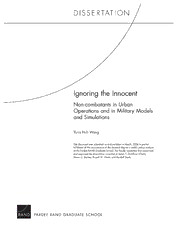
DTIC ADA487760: Ignoring the Innocent: Non-combatants in Urban Operations and in Military Models and Simulations

Atlantida

Indian Archaeology 1978-79 A Review - Archaeological Survey of

NASA Technical Reports Server (NTRS) 20060021466: XBoard: A Framework for Integrating and Enhancing Collaborative Work Practices

Greek Government Gazette: Part 2, 2006 no. 364

TCPS 737-2548: DRIED CLOVES
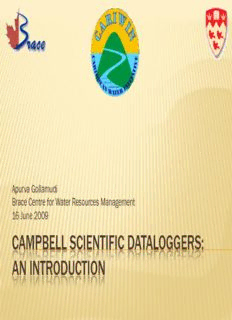
campbell scientific dataloggers
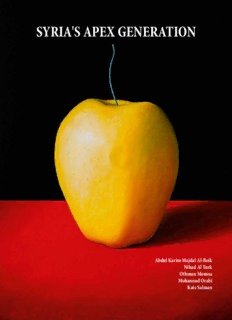
syria's apex generation

A town like Paris: falling in love in the city of light
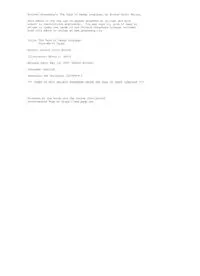
The Tale of Daddy Longlegs by Arthur Scott Bailey

NASA Technical Reports Server (NTRS) 19930015467: A global path planning approach for redundant manipulators

NASA Technical Reports Server (NTRS) 20060005549: Statistical Characterization of Environmental Error Sources Affecting Electronically Scanned Pressure Transducers
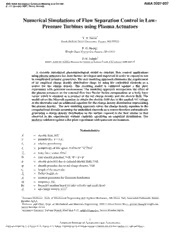
NASA Technical Reports Server (NTRS) 20080022317: Numerical Simulations of Flow Separation Control in Low-Pressure Turbines using Plasma Actuators
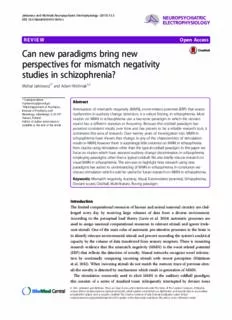
Can new paradigms bring new perspectives for mismatch negativity studies in schizophrenia?
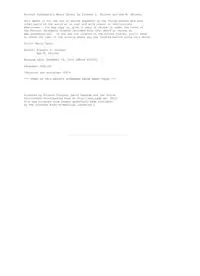
Merry Tales by Eleanor L Skinner
